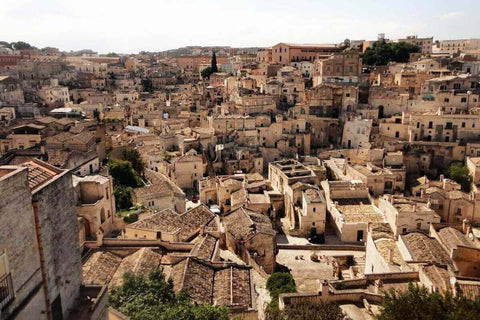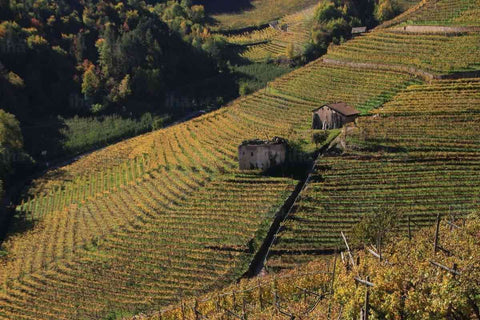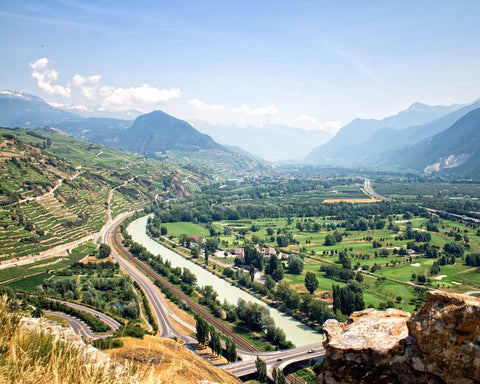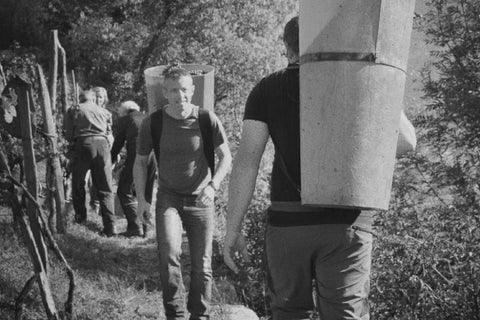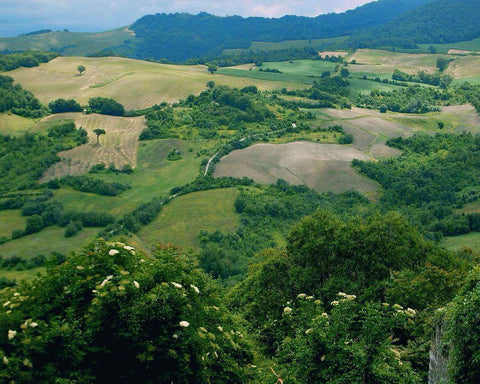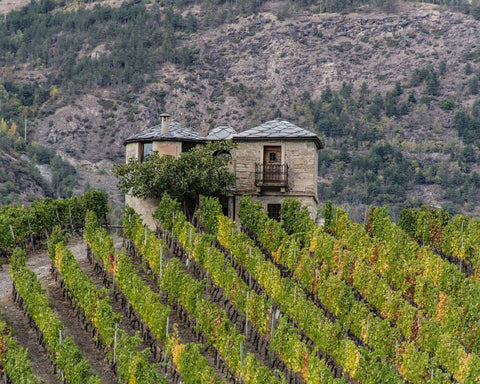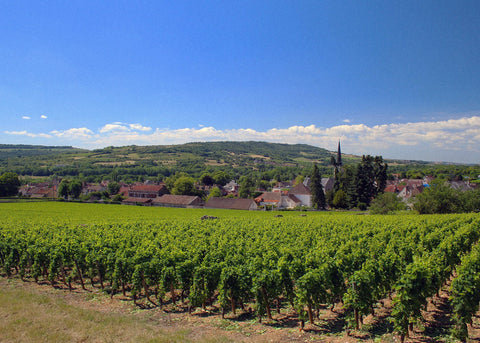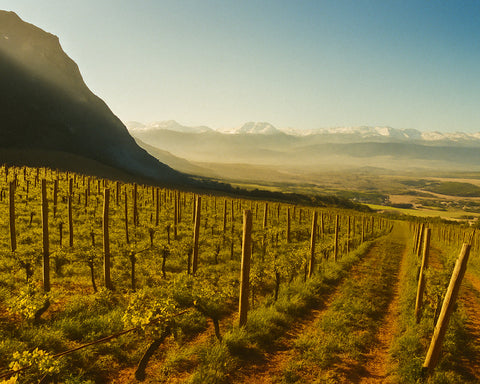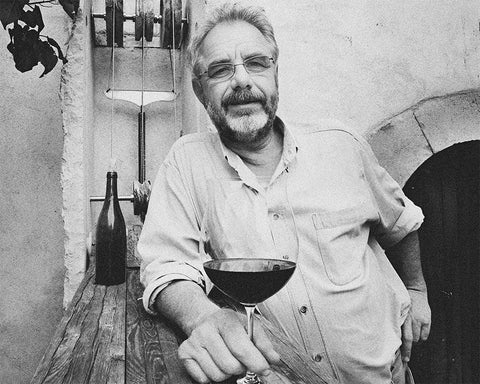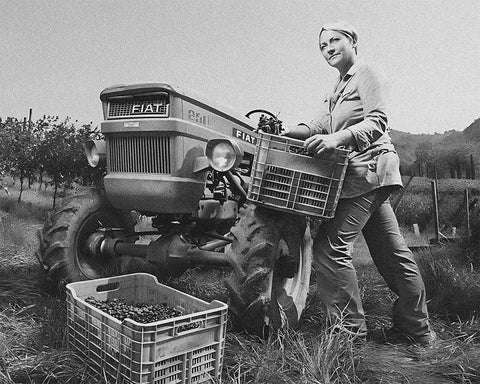Basilicata, known as "the land of the wolves," stands as one of Italy's most picturesque and historically rich regions. Nestled between Calabria and Apulia in the southern part of Italy, this lesser-known gem is celebrated for its rugged landscapes, ancient towns, and rich cultural heritage.
Over the centuries, Basilicata has maintained a strong connection to its agricultural roots, with a focus on traditional farming practices that respect the environment and the region's unique terroir.
The wines from Basilicata are not just beverages; they encapsulate the region's rich history, its commitment to quality, and its passionate pursuit of vinicultural perfection, especially evident in its renowned Aglianico del Vulture wines.
Table of Contents
History of Basilicata
Basilicata, with its mountainous terrain and strategic location, has always been a region of great significance. Its history is a rich tapestry of various cultures, from the ancient Greeks and Romans to the Byzantines and Normans.
Over the centuries, Basilicata underwent numerous transformations, from being part of the Magna Graecia to playing a significant role in the Kingdom of Naples.
The regional capital, Potenza, became a focal point of cultural and economic activities. Throughout these historic shifts, one constant remained: Basilicata's unwavering commitment to preserving its traditions and producing exceptional agricultural products.
The history of winemaking in Basilicata dates back to ancient times. The Greeks introduced viticulture to the region, recognizing the potential of its volcanic soils. The Romans further developed viticulture, laying the foundation for Basilicata's future as a major wine-producing area.
Following the fall of the Roman Empire, monastic orders preserved and advanced viticulture in Basilicata. Monasteries became centers of agricultural knowledge, and monks meticulously maintained vineyards and documented their winemaking practices. The Benedictine order played a significant role in promoting high-quality viticulture.
During the medieval period, the nobility also began recognizing the value of Basilicata's wines. They established vineyards and wineries, contributing to the region's reputation for producing fine wines. The Counts of Anjou, who ruled the Kingdom of Naples, were instrumental in promoting and protecting Basilicata's viticultural interests.
The Renaissance period marked a significant turning point in Basilicata's winemaking history. During this time, the Aglianico grape began to gain prominence. Aglianico, often referred to as the "Barolo of the South," became the cornerstone of Basilicata's viticulture. The grape thrived in the volcanic soils of Mount Vulture, producing wines with remarkable complexity and aging potential.
One of the most notable developments during this period was the emergence of Aglianico del Vulture. This wine is celebrated for its depth, structure, and longevity. The origins of Aglianico del Vulture can be traced back to the early 19th century when local winemakers refined their techniques, transforming it into the powerful wine we know today.
The 19th century was a period of innovation and challenges for Basilicata's wine industry. The influence of French enologists and the adoption of scientific approaches to viticulture improved the quality and consistency of Basilicata's wines.
However, this period was also marked by the devastating impact of phylloxera, a vine-killing pest that ravaged European vineyards. Basilicata was not spared, and many vineyards were destroyed. The crisis prompted a replanting effort, often using American rootstocks resistant to phylloxera, which eventually allowed the region to recover and continue its winemaking traditions.
The early 20th century was challenging for Basilicata, as it was for many European wine regions. The two World Wars and the economic turmoil that followed significantly impacted viticulture. However, the resilience of Basilicata's winemakers shone through as they worked to rebuild and rejuvenate their vineyards.
The mid-20th century marked the beginning of a renaissance for Basilicata's wines. Winemakers began to focus on quality over quantity, adopting modern techniques while respecting traditional methods. This period saw the rise of notable wine families and estates, who played pivotal roles in elevating the status of Basilicata's wines on the global stage.
Basilicata has firmly established itself as one of the world's promising wine regions in recent decades. The region's commitment to quality, combined with its unique terroir, has earned it a place among the noteworthy wine-producing areas of Italy.
The appellation system, introduced in the 1960s, further cemented Basilicata's reputation. Creating DOC (Denominazione di Origine Controllata) and DOCG (Denominazione di Origine Controllata e Garantita) classifications helped protect and promote the region's wines. Aglianico del Vulture was among the first to receive DOCG status, underscoring its significance.
Terroir of Basilicata
Basilicata's terroir is characterized by its unique interplay of climate, topography, and soil. The region enjoys a Mediterranean climate, with hot summers and mild winters, influenced by its proximity to the Ionian and Tyrrhenian Seas.
The volcanic terrain, particularly in areas like Mount Vulture, provides an optimal setting for vineyards, ensuring rich mineral content and excellent drainage. The soil composition varies, ranging from volcanic and clayey in areas like Vulture to more calcareous soils in other parts of the region.
This diverse terroir lends itself to the cultivation of a myriad of grape varieties, each expressing a unique facet of the region's multifaceted character.
The Geology of Basilicata
Basilicata's landscape predominantly comprises mountains and hills, with elevations ranging from 100 to 1,500 meters above sea level. The region is divided into several sub-regions, each with unique geological characteristics. The primary wine-producing areas include Vulture, Matera, and Val d'Agri, each contributing distinct terroir profiles.
- Vulture: Known for its volcanic soils, which provide excellent drainage and mineral content, essential for growing high-quality grapes. The region is famed for Aglianico del Vulture, which thrives in the rich soils and benefits from the area's significant diurnal temperature variation.
- Matera: Characterized by calcareous soils, Matera is ideal for producing white wines and robust reds. These conditions are perfect for the Greco and Primitivo grapes, which produce aromatic and structured wines.
- Val d'Agri: This area features a mix of clay, limestone, and sandy soils. Val d'Agri is known for its Cabernet Sauvignon and Merlot grapes, producing elegant and balanced wines.
The region's geological diversity ensures that each grape variety can match its optimal soil type, enhancing the grapes' expression and complexity.
Climate and Its Influence
Basilicata's climate is Mediterranean, characterized by hot summers and mild winters, with significant temperature variation between day and night. This diurnal range is crucial for grape ripening, allowing the development of sugars during the day and preserving acidity at night. The region's microclimates, influenced by the surrounding mountains and seas, further contribute to the distinctiveness of Basilicata wines.
The Grapes of Basilicata
Basilicata has several indigenous grape varieties, each adapted to the region's unique terroir. The most notable are Aglianico, Greco, Malvasia, and Primitivo.
Red Grape Varietals
- Aglianico: The cornerstone of Basilicata's most celebrated wines, such as Aglianico del Vulture.
- Primitivo: Known for its rich, full-bodied wines with dark fruit flavors and spicy notes.
- Sangiovese: Produces elegant wines with bright acidity and red fruit flavors.
- Montepulciano: Known for its deep color and robust flavors.
- Cabernet Sauvignon: Produces structured and age-worthy wines.
- Merlot: Known for its soft tannins and lush fruit flavors.
White Grape Varietals
- Greco: Known for producing aromatic and crisp wines, primarily in Matera.
- Malvasia Bianca: Used to make fragrant and flavorful white wines.
- Fiano: Produces rich and aromatic white wines.
- Chardonnay: Used both in still wines and for sparkling wine production.
- Trebbiano: Often blended with other varietals, adds acidity and freshness.
Top Wines of Basilicata
Aglianico del Vulture: Often referred to as the "Barolo of the South," Aglianico del Vulture is a testament to Basilicata's vinicultural prowess. Made from the Aglianico grape, this wine is characterized by its deep garnet hue, complex aromas of dark fruits, leather, and spices, and an aging potential that rivals the world's finest wines.
The wine undergoes extended aging, first in large oak barrels and then in the bottle, resulting in a wine of profound depth, structure, and elegance.
Greco di Matera: Greco di Matera, while sharing many similarities with other Greco wines, has its distinct identity. Known for its bright acidity and aromatic complexity, it is a versatile wine that pairs well with a variety of dishes.
The terroir of Matera, with its calcareous soils, imparts a certain minerality to the wines, with notes of citrus, white flowers, and herbs. Greco di Matera produces wines of remarkable freshness and elegance.
Other Notable Wines: While Aglianico del Vulture and Greco di Matera are undoubtedly the crown jewels of Basilicata, the region is also home to other notable wines like Primitivo, Sangiovese, and Malvasia. Primitivo is known for its rich fruit flavors and spice, Sangiovese for its bright acidity and red fruit, and Malvasia for its aromatic and flavorful white wines.
Cuisine and Typical Products of Basilicata
Basilicata's culinary landscape is as rugged and rich as its wines. The region is famed for its hearty and rustic dishes, with a strong emphasis on local and seasonal ingredients.
Pork, lamb, and goat are staples in Basilicata's cuisine, often featured in dishes like "Pasta con la Mollica," pasta with toasted breadcrumbs, and "Lucanica," a type of sausage. The use of chili peppers and herbs like wild fennel adds a distinct flavor to many dishes.
Basilicata is also known for its cheeses, with Pecorino di Filiano and Caciocavallo Podolico being some of the notable varieties. The culinary traditions of Basilicata, paired with its exceptional wines, offer a gastronomic journey that resonates with the region's rich heritage and passion for excellence.
Basilicata Antipasti
In Basilicata, a meal often starts with a selection of antipasti. These appetizers showcase the region's diverse flavors and set the stage for future courses. A typical antipasti spread might include:
- Pancotto: A rustic bread soup made with stale bread, vegetables, and olive oil.
- Peperoni Cruschi: Dried and fried sweet peppers, often served as a snack or side dish.
- Frittata di Lampascioni: An omelette made with wild onions, a traditional ingredient in Basilicata.
- Soppressata: A type of dry-cured sausage made from pork, seasoned with salt, pepper, and chili.
Basilicata Primi Piatti (First Courses)
The first course in a Basilicata meal often features pasta, soups, or hearty grain dishes. These dishes showcase the region's grains, legumes, and seasonal vegetables.
- Orecchiette con Cime di Rapa: A traditional pasta dish made with turnip greens, garlic, and chili peppers.
- Lagane e Ceci: A rustic pasta and chickpea soup flavored with garlic and rosemary.
- Strascinati: A type of hand-rolled pasta often served with a rich meat or vegetable sauce.
- Cavatelli con Ricotta: Small pasta shells served with fresh ricotta cheese and a sprinkle of black pepper.
Basilicata Secondi (Second Courses)
Basilicata is known for its high-quality meats, particularly pork and lamb. The second course often highlights these prized ingredients.
- Agnello alla Lucana: Lamb cooked with herbs, white wine, and potatoes, a classic dish of the region.
- Salsiccia Lucanica: A traditional sausage made from pork, seasoned with fennel seeds, and grilled or pan-fried.
- Baccalà alla Lucana: Salt cod cooked with tomatoes, potatoes, and peppers.
- Cutturidd: A lamb stew cooked with potatoes, onions, and tomatoes, often flavored with chili peppers.
Basilicata Contorni (Side Dishes)
Basilicata's cuisine doesn't neglect vegetables. Many side dishes and salads highlight the region's produce.
- Verdure Grigliate: Grilled vegetables such as eggplant, zucchini, and peppers, often drizzled with olive oil.
- Cicoria Ripassata: Sautéed chicory with garlic and chili peppers.
- Fagiolini con Pomodoro: Green beans cooked with tomatoes and garlic.
Basilicata Formaggi (Cheeses)
Basilicata produces some of Italy's most renowned cheeses. A cheese course often follows the main dishes.
- Pecorino di Filiano DOP: A hard cheese made from sheep's milk, known for its sharp flavor.
- Caciocavallo Podolico: A semi-hard cheese made from the milk of the Podolica cattle, with a distinct flavor.
- Ricotta Salata: Salted ricotta cheese, often grated over pasta dishes.
- Canestrato di Moliterno: A hard cheese made from a mix of sheep's and goat's milk, aged in wicker baskets.
Basilicata Dolci (Dessert)
Basilicata desserts often feature local nuts, honey, and seasonal fruits.
- Strazzata: A sweet flatbread made with almonds, sugar, and cinnamon.
- Mostaccioli: Dense, spiced cookies made with grape must and nuts.
- Cartellate: Fried pastries soaked in honey or vin cotto (cooked wine syrup).
- Torta di Mandorle: An almond cake flavored with lemon zest and a hint of cinnamon.
Typical Products of Basilicata
Basilicata's cuisine is based on high-quality local products. Many of these have achieved protected status, ensuring authenticity and traditional production methods.
Olive Oil
The region produces some of Italy's finest olive oil. Basilicata's olive oil is known for its fruity flavor and low acidity, often used to enhance the flavor of local dishes.
Wheat
Basilicata is known for its durum wheat, used to make traditional bread and pasta. The Pane di Matera IGP is a famous bread from the region, known for its crusty exterior and soft interior.
Cheese
Basilicata produces a wide variety of cheeses, each reflecting the characteristics of its production area.
- Pecorino di Filiano DOP: A hard cheese made from sheep's milk, known for its sharp flavor.
- Caciocavallo Podolico: A semi-hard cheese made from the milk of the Podolica cattle, with a distinct flavor.
- Canestrato di Moliterno: A hard cheese made from a mix of sheep's and goat's milk, aged in wicker baskets.
Meat and Charcuterie
Basilicata meat products are known for their quality and distinctive flavors.
- Lucanica: A traditional sausage made from pork, seasoned with fennel seeds and chili peppers.
- Soppressata: A type of dry-cured sausage made from pork, seasoned with salt, pepper, and chili.
- Capocollo: A dry-cured pork neck, known for its rich flavor and marbling.
Fruits and Vegetables
Basilicata's varied climate allows for cultivating a wide range of produce.
- Melanzane Rosse di Rotonda: Red eggplants from Rotonda, known for their unique color and flavor.
- Peperone di Senise: Sweet bell peppers from Senise, used in many traditional dishes.
- Lampascioni: Wild onions used in various regional dishes.
